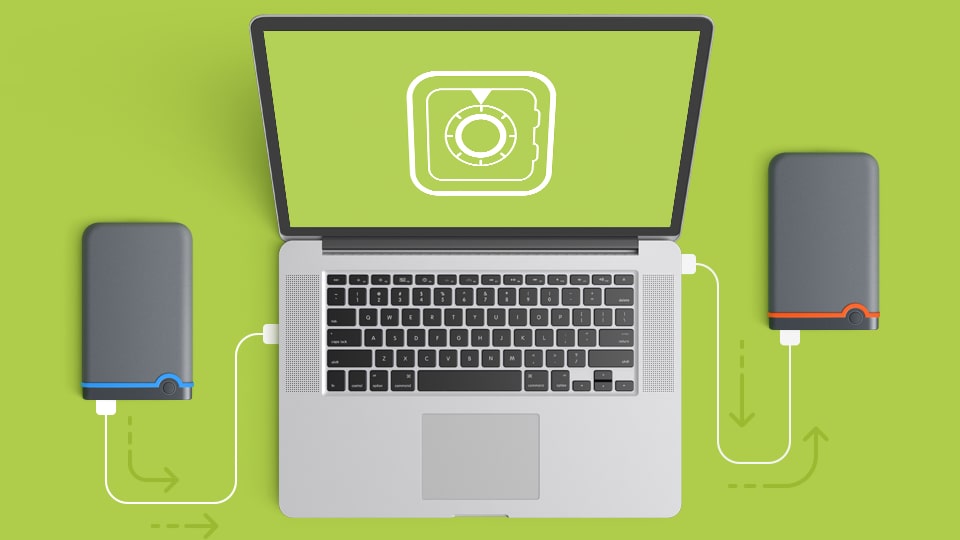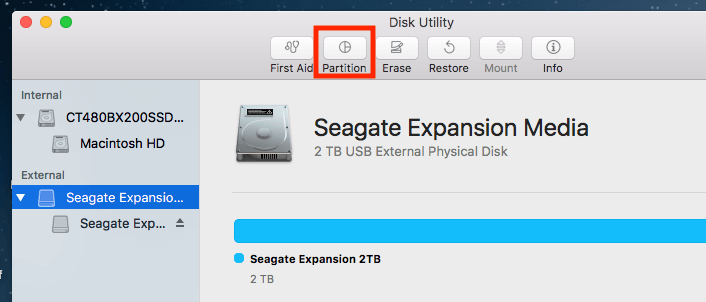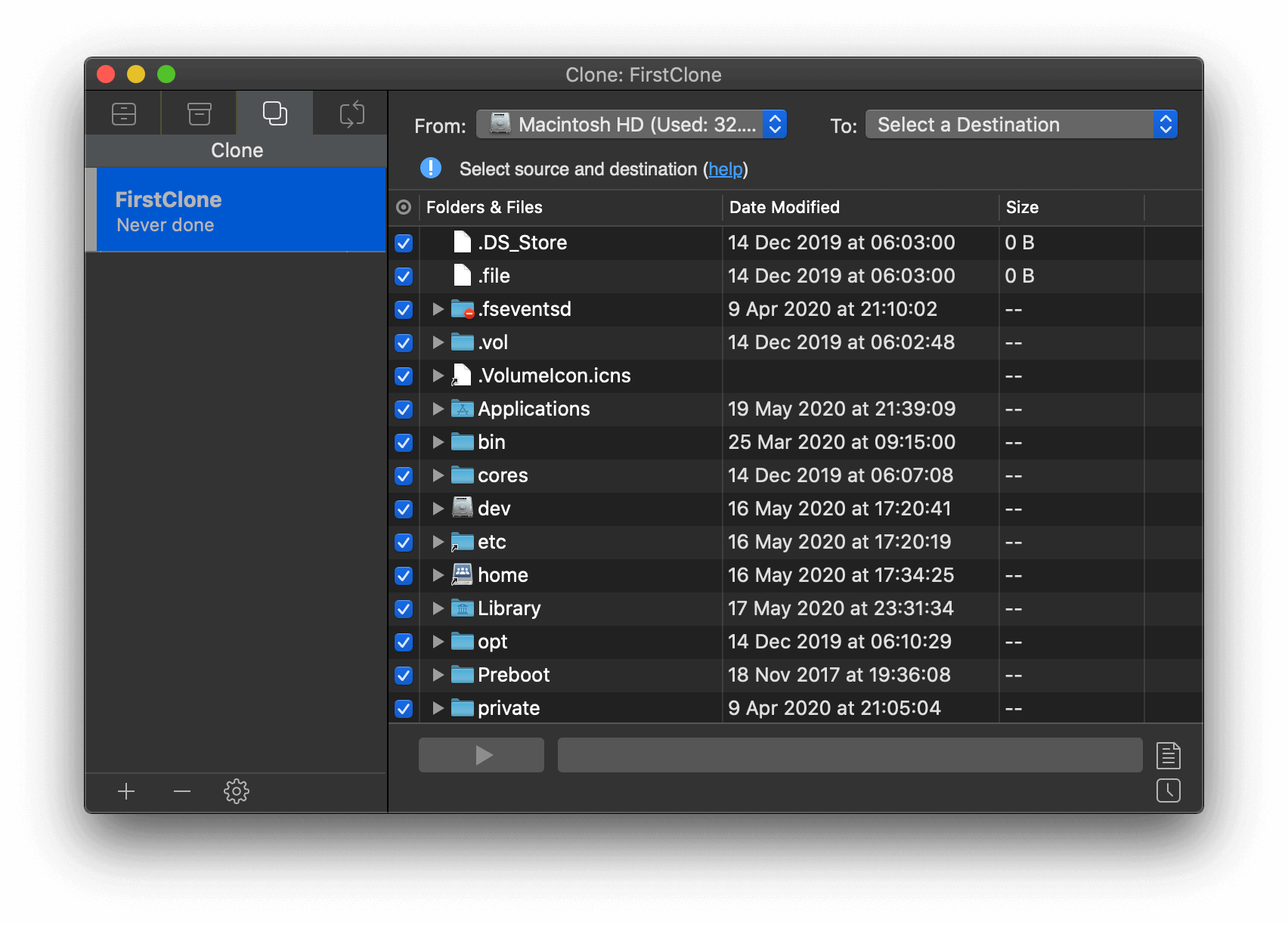

However, the folks at Bombich include a long list of provisos about what might go wrong during copying.Įven after making a valid bootable system copy, keeping it up to date is problematic:

Apple offers a bypass that Carbon Copy Cloner has managed to take advantage of, which is a low-level copying tool called asr that can in some (but not all) circumstances copy Big Sur’s system volume from an internal to an external drive and keep it in bootable shape. Any change to even a single bit in the volume causes validation to fail (breaking the “seal”).
Backup software for mac to external disk full#
But it’s not designed to be backed up in the way that macOS 10.14 and earlier were, and even how Shirt Pocket (SuperDuper) and Bombich Software ( Carbon Copy Cloner) managed to get full Catalina backups working, too.Įssentially, a Big Sur system volume has to be installed on a freshly erased disk, because the process of making the seal is unique to each volume. The system and Data volumes together (bottom) appear as a seamless whole in the Finder.Īpple calls this a Sealed System Volume, and it’s another layer of protection against both malware and other attempts to subvert your system to spy on you, corrupt your data, or exfiltrate personal information. The system volume isn’t even mounted directly (middle), but uses a locked snapshot for even more security (lower left). In Big Sur, macOS is really a volume group of system, Data, and a few other partitions. (The Big Sur volume isn’t even mounted directly, but as a read-only APFS snapshot, making it even harder for an attacker to find a way in.) The system volume is read-only and locked against modification during an active macOS session the Data volume can be read and written, and apps on its may be launched. With the concept of a volume group in APFS, Catalina organized all system files and core apps into one volume and all user-owned and user-modifiable data, third-party apps, and some Apple apps into another. This culminated in macOS 10.15 Catalina in splitting macOS into two pieces, which appear seamlessly as a single unit in the Finder, but which severed a long-time intermingling of files. Along the way, Apple kept adding more features to APFS. APFS allowed more a sophisticated organization of aspects of macOS in the startup volume’s partition. APFS first became mandatory for SSD-based Macs and then for ones with a Fusion drive. Aside from Disk Utility, try using iCloud for backing up your photos, and Time Machine for creating copies of larger files.Apple splits the startup volume into two piecesĪpple phased in the process of changing how it organizes the startup volume through a phase in of the APFS (Apple File System). You can choose the one that suits your needs best, or even better – use different methods for different types of data. There are many different ways to backup your iOS and macOS devices. If you can’t remember when was the last time you’ve made a copy of your files, it’s safe to say it’s time to do it again. If you don’t want to lose your data, taking a backup of your Mac should become a habit for you. To return to your startup disk, you’ll need to restart your computer once again. Your Mac will now boot from the backup you just made.

When your screen turns black, hold down the Option key until your screen turns gray and you see icons of bootable hard drives.Click on the Apple menu and choose Restart.You can do it using the Mac’s Boot Manager. After your Mac backup is complete, you’ll need to restart your computer and see if it can boot from the backup copy. One extra precaution that you can take is checking your backup to see if it works as your startup disk. Then you’ll have a complete copy of your hard drive which you can use to restore your data later on. Once it’s finished, Disk Utility will notify you. This will start the backup.ĭisk Utility will require some time to create the backup of your Mac depending on the amount of data you have on your startup disk. For general use, choose the default options: “compressed” under Format and “none” under Encryption.


 0 kommentar(er)
0 kommentar(er)
